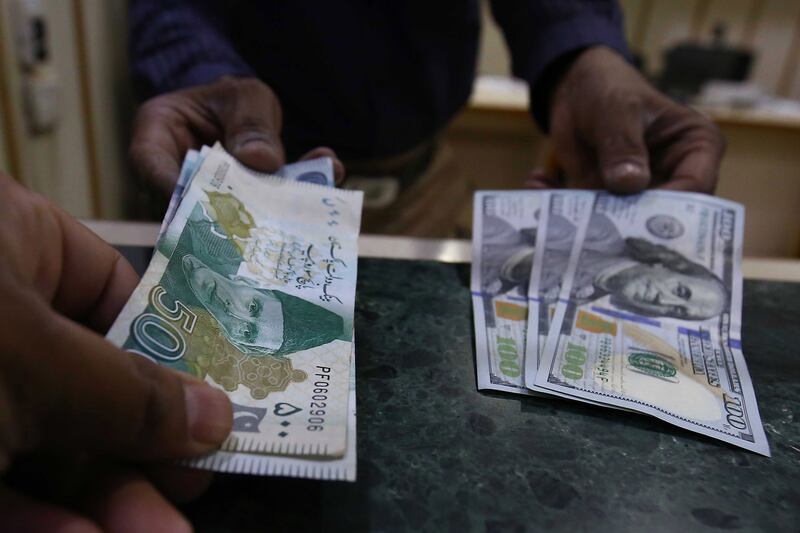Pakistan’s rupee is poised for its biggest monthly decline in more than two years as deteriorating finances and uncertainty over the International Monetary Fund’s bailout plan weigh on the currency.
The rupee has declined about 7 per cent in May, the steepest drop since March 2020, as the country negotiates a bailout package with the fund and other nations to keep its economy afloat and avert a default.
Analysts expect the currency to remain under pressure despite steps taken by the government to meet IMF demands.
Pakistan needs between $36 billion and $37bn in financing for the fiscal year starting June, Finance Minister Miftah Ismail said last week.
Morgan Stanley estimates the funding gap to be as high as $8bn this calendar year. A bailout by the IMF has become critical as countries that have typically been generous lenders are proceeding more cautiously now.
“Pakistan’s funding requirement for the coming year will be met but it will be pretty tight, and that will keep the rupee under pressure,” said Saad Khan, head of research at IGI Securities in Karachi.
IGI and Ismail Iqbal Securities predict that the rupee will decline to 220 per dollar by the end of the year. It closed at 199.06 per dollar on Monday.
Pakistan is seeking to secure a staff-level agreement with the IMF in June to unlock the remaining $3bn from its loan programme. It has also requested to increase the loan size by $2bn.
The country has $3.2bn in dollar-denominated debt that is due this year, data compiled by Bloomberg shows.






